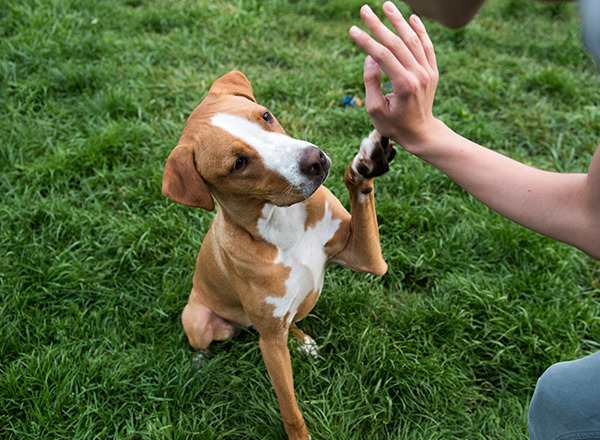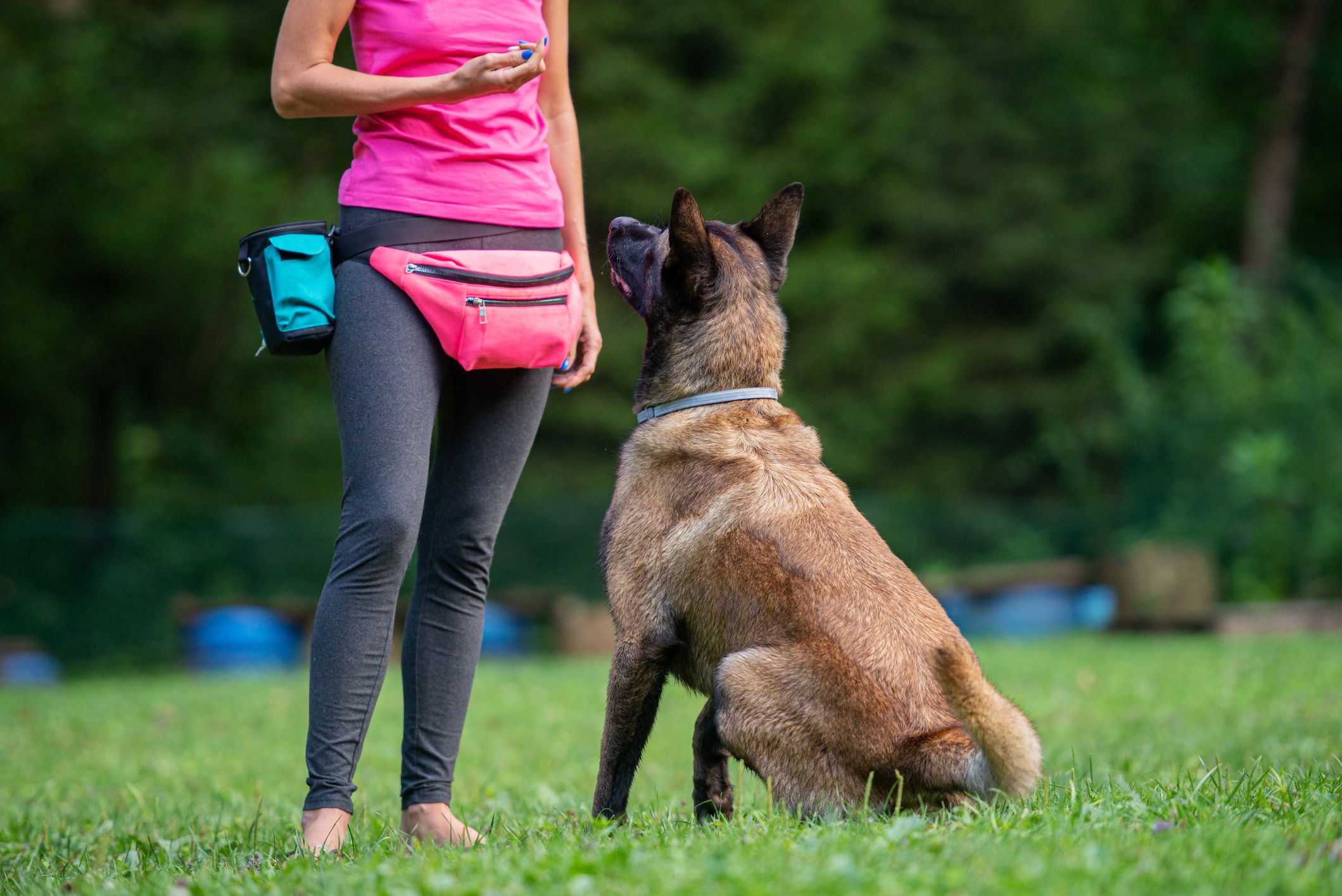Novice's Guide to Successful Pet Dog Training in your home
Effectively training a pet dog in your home requires a nuanced understanding of canine habits and efficient communication techniques. Developing clear training goals, using top notch rewards, and preserving consistency throughout relative are critical elements. Incorporating training right into daily regimens can boost both interaction and retention. Lots of amateur trainers run into challenges that might hinder progression. To navigate these intricacies effectively, it's important to explore a number of essential aspects that can transform your technique and bring about an unified connection with your pet. What basic principles should every novice grasp to ensure success?
Understanding Canine Habits
Understanding pet dog actions is vital for efficient training and fostering an unified relationship between people and their canine companions - Puppy Training. Dogs interact mainly via body language, articulations, and face expressions, making it important for proprietors to analyze these signals accurately. Identifying behaviors such as tail wagging, roaring, or trembling can offer understandings right into a dog's emotion and objectives
In addition, understanding the all-natural impulses of pet dogs, such as their pack mentality, helps owners establish management duties within the household. This is crucial for developing an organized environment where pets feel secure and are a lot more responsive to training. Pets are likewise affected by their socializing experiences; early direct exposure to numerous settings, people, and other pets can substantially form their habits later in life.
Usual behavior problems, such as aggressiveness, anxiety, or excessive barking, commonly stem from misunderstandings or unmet needs. Observing and addressing these concerns promptly can prevent escalation and make certain a positive training experience. By cultivating a deep understanding of pet habits, owners can tailor their training methods to suit their canine companions, eventually resulting in a mannerly and contented pet dog.

Crucial Training Tools
A well-equipped training room can considerably improve the effectiveness of pet training at home. Essential training tools make certain that both the instructor and the dog can participate in productive sessions that cultivate understanding and bonding.

Buying a tough leash and a comfy, well-fitting collar or harness is crucial for safety and security and control. These tools help establish boundaries and make certain the pet continues to be protected throughout training. In addition, an assigned training area, cost-free from diversions, help concentration for both the fitness instructor and the canine.
Educating aids such as training pads, cones, or dexterity equipment can additionally boost the experience by presenting range and obstacles. Last but not least, having a note pad or digital application for tracking progression can be invaluable, permitting you to keep in mind successes and areas for renovation. Using these necessary devices will certainly produce a favorable training setting and lay the foundation for reliable knowing.
Creating an Educating Regimen
Establishing a constant training regimen is important for reliable dog training in the house. A well-structured regular not only aids in strengthening desired behaviors however also provides your dog with a More Bonuses sense of security and predictability. To develop an effective training routine, begin by recognizing particular training objectives, such as fundamental commands, leash walking, or housebreaking.
Pick a marked time each day for training sessions, preferably when your dog is alert and responsive. Sessions needs to be brief, roughly 5 to 15 minutes, to preserve emphasis and protect against tiredness. Uniformity in timing and setting will improve your canine's learning experience.
Include training into day-to-day tasks to enhance skills. Technique commands throughout strolls or nourishment, which integrates learning right into all-natural regimens. In addition, remain flexible and change the regular as essential, accommodating your pet dog's energy degrees and state of mind.
Positive Support Strategies

When applying favorable reinforcement, it is vital to pick rewards that are encouraging for your canine. High-value deals with, such as small pieces of chicken or cheese, can be especially efficient during training sessions. Additionally, differing the rewards can keep your pet's interest and enthusiasm.
Beginning with easy commands, like "sit" or "stay," and progressively development to extra complicated tasks. Consistency is key; ensure that all relative utilize the very same commands and benefit systems to prevent confusion.
Additionally, it is vital to remain individual and prevent disappointment. Canines, like people, discover at their own speed. By cultivating a supportive training atmosphere via favorable reinforcement, you can boost your canine's understanding experience while reinforcing the bond in between you and your hairy friend, laying the groundwork for successful training outcomes.
Typical Training Difficulties
While educating a pet dog at home can be a satisfying experience, it usually features a set of typical challenges that can examine both patience and uniformity. One widespread issue is diversion. Pets may become quickly averted by noises, motions, or even aromas in their atmosphere, making it difficult to maintain their emphasis throughout training sessions.
One more difficulty is incongruity in commands and reinforcement. If family members use different hints or benefits, it can impede and confuse the canine progress. Establishing a unified strategy is essential for reliable communication.
Additionally, dogs can experience irritation or stress and anxiety, especially if they do not understand what is anticipated of them. This can lead to unfavorable habits, such as chewing or barking.
Finally, the timing of support is important. Postponed rewards can lessen the performance of favorable reinforcement, as dogs might fall short to connect the behavior with the reward.
Getting over these obstacles needs commitment, clear interaction, and an organized training strategy - Puppy Training. Acknowledging and dealing with these common barriers will lead the way for a much more effective and delightful training experience in your home
Final Thought
In conclusion, effective dog training at home requires an extensive understanding of canine habits and reliable interaction approaches. By establishing clear training goals and making use of high-grade treats alongside positive reinforcement, the training process comes to be a lot more gratifying for both the canine and the trainer.
Developing a constant training regimen is crucial for effective dog training at home.Positive reinforcement techniques are essential to efficient a knockout post pet training, advertising desired actions via incentives instead than punishment. By fostering a helpful training environment via favorable support, you can enhance your pet's discovering experience while strengthening the bond in between you and your furry companion, laying the foundation for successful training outcomes.
In conclusion, successful pet dog training at home requires a thorough understanding of canine habits and reliable interaction techniques. By establishing clear training goals and utilizing premium treats along with favorable support, the training process becomes a lot more fulfilling for both the dog and the trainer.